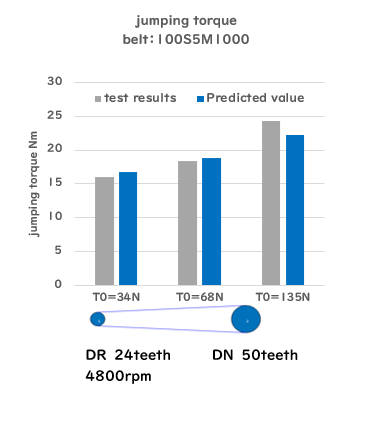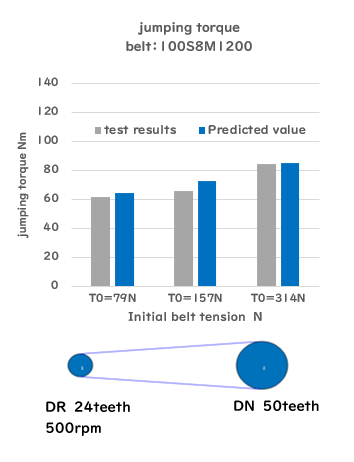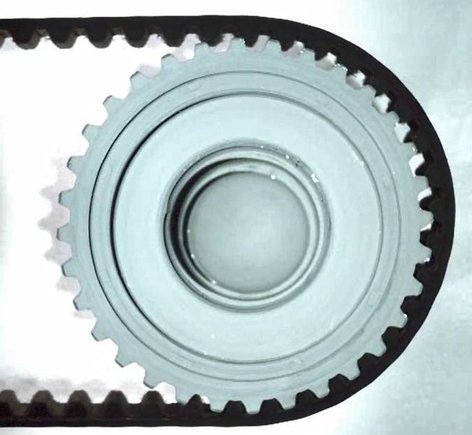Technical Library
Jumping Torque
Understanding Timing Belt Jumping in High-Load Applications
Timing belts are crucial for power transmission in various machinery, working through the meshing of belt teeth with pulley grooves. However, in high-load applications such as injection molding machines and industrial robots, a common challenge is timing belt jumping, also known as tooth skipping. This phenomenon occurs when the belt teeth forcefully disengage from the pulley teeth, interrupting the smooth transmission of power.
The consequences of jumping extend beyond mere power transmission disruption. It can lead to severe damage, such as chipping or cutting of the belt teeth, and ultimately result in the cessation of equipment function, posing significant operational and maintenance challenges.
To illustrate this issue, we have provided a slow-motion video below. This video captures the process of timing belt jumping in action, offering a clear view of how and when tooth skipping occurs. Observing this phenomenon in slow motion provides valuable insights into the mechanics of timing belt jumping and its impact on machinery.
Prediction of Jumping (tooth jumping)
"Jumping torque" refers to the maximum torque a belt system can withstand before tooth skipping occurs. This phenomenon, also known as tooth skipping, is influenced by several factors including the diameter of the pulley, the length of the span, the winding angle, the belt's elongation characteristics, and the initial tension applied. Predicting jumping torque has traditionally been challenging due to these variable factors.
Our advanced approach now enables accurate prediction of jumping torque from the early design stages of our customers' equipment. This predictive capability is a significant breakthrough, enhancing the design and reliability of belt systems.
Included below is a graph that illustrates the comparison between our predicted values of jumping torque and the actual experimental data. This comparison highlights the high precision of our predictive model, displaying its utility in practical applications.


Innovative Research on Jumping Torque in Timing Belt Drives
Our team has published a significant paper detailing the basic mechanism of jumping and a pioneering formula for predicting jumping torque in timing belt drives. This work represents a substantial advancement in the field, introducing the world's first practical equation for predicting jumping torque and validating its effectiveness.
Title: "Jumping Phenomena and Prediction of Jumping Torque in Timing Belt Drives"
DOI: 10.1299/transjsme.21-00250
This publication has achieved notable recognition, becoming the most accessed paper in the Journal of the Japan Society of Mechanical Engineers (JSME) for the year. This distinction is based on data collected from January to December 2022.
We are proud of the impact this paper has had in the mechanical engineering community and are committed to furthering research in this area.
Should you have any inquiries regarding the content of this technical information or wish to delve deeper into our research, please do not hesitate to reach out to us. Our contact form is available for any questions or discussions you might wish to pursue.






